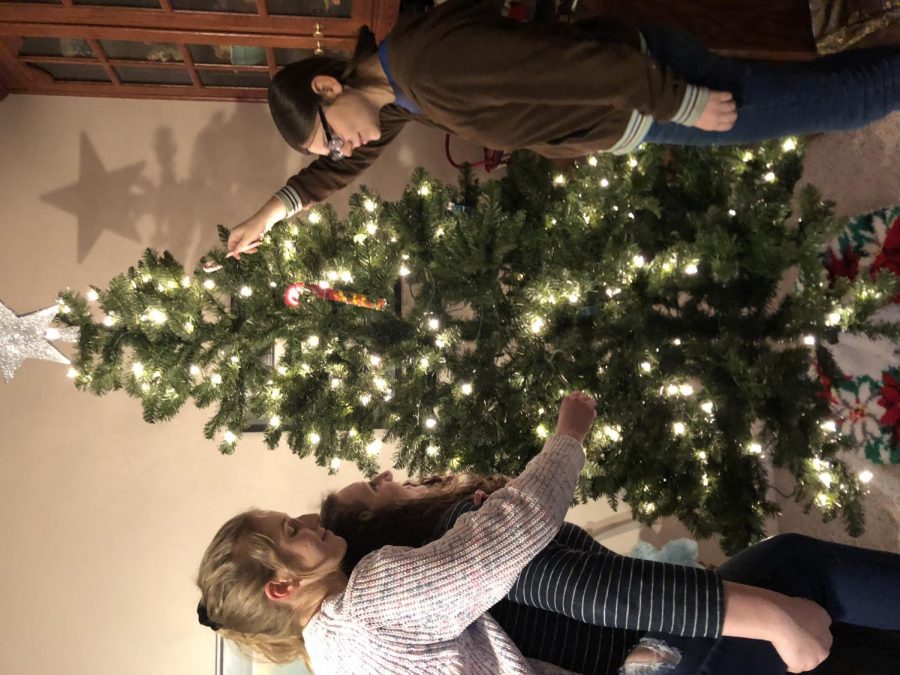Keep it Real With Your Christmas Tree!
Freshman, Maddie O’Hara, junior Genevieve Miller, and junior Emily Felice decorate a Christmas tree. Many families consider Christmas tree decorating a tradition. “I remember countless times that my family spent a whole day cutting down the perfect Christmas tree that all of us liked” said junior Emily Felice.
January 2, 2019
‘Tis the season for wrapping presents, watching Christmas movies and picking out the perfect Christmas tree. Christmas decorations are often among the highlights of the holiday season, and the tree is typically the center of attention. Around this time of year, a big debate is if one should buy a real tree or fake Christmas tree. There are many positives to both kinds of trees.
Personally, I am partial to real Christmas trees because I have grown up going to the tree farm and cutting down our tree, however, I also have a fake tree in my house so I understand why someone may prefer them. The act of going to a tree field and cutting down a tree adds to the family aspect of decorating for Christmas. In my family, we go to the tree farm, cut down the tree, and decorate it together. It is a tradition for my family, and for many other families as well. Bundling up to go outside, cutting down the tree by hand, and driving home with a tree on your car are all aspects that add to the unique experience. There is also the option to buy a precut tree, for those who prefer to not cut it down themselves. However, I do understand how setting up a fake Christmas tree is also a great experience; with ours, it is like putting a puzzle together.
Christmas trees, real and fake, light up the room with their lights. Real trees also fill the room with a festive smell, that welcomes everyone into the room. There are many options when it comes to real trees, including fraser fir, balsam fir, and blue spruce. They vary in needles, color, overall look and smell. Although fake trees don’t smell, there are a variety of products that are on the market to provide the “Christmas tree smell”. One positive aspect of fake trees is that they do not drop needles and are allergy friendly, as the scent or pollen can be irritating to some people.
Last but not least, real trees may actually be better for the environment. Christmas trees are usually grown on farms and meant to be cut down so another tree can replace it. According to the LA Times, a large number of resources go into making a fake tree, including PVC, steel, aluminum, and whatever is needed for packaging. In addition, the tree has to be shipped from where it was made, for example, Asia. However, the biggest thing to consider is what happens to the tree after it is used for the holiday season. Some places will let residents compost trees, others will send the tree to a landfill. Either way, the tree will eventually decompose. On the other hand, fake trees can be reused over and over again and donated to places that may need it but ultimately will end up in a landfill as they are unable to be recycled.
Christmas trees, real or fake, are a symbol that represents Christmas. The trees are filled with memories and joy from Christmases past and present. It may be because I have grown up cutting down my own Christmas tree, but I think I will always be partial to a real tree.


